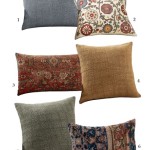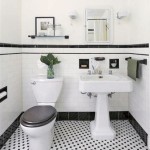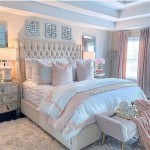1940s Home Decor: A Reflection of Resilience and Resourcefulness
The 1940s witnessed a profound shift in home decor, heavily influenced by the global events of World War II and its aftermath. Resourcefulness and practicality became paramount, replacing the opulence and extravagance of previous decades. This era marked a transition from pre-war styles to a more restrained and functional aesthetic, reflecting the nation's collective experience of hardship and subsequent rebuilding efforts.
Economic constraints resulting from wartime rationing and materials shortages significantly impacted the availability and cost of decorative items. Luxury materials such as silk and imported fabrics were scarce, forcing homeowners to embrace alternative, more affordable options. This necessity spurred innovation and creativity, leading to the repurposing of existing items and the adoption of new, domestically produced materials.
The prevailing mood of optimism and a desire for stability following the war also shaped interior design trends. Homes were viewed as sanctuaries – safe, comfortable havens where families could rebuild and reconnect after years of separation and uncertainty. This emphasis on comfort and functionality led to the popularity of practical layouts, durable furnishings, and warm, inviting color palettes.
Key Point 1: The Influence of Wartime Scarcity and Rationing
One of the most defining characteristics of 1940s home decor was the impact of wartime scarcity and rationing. The need to conserve resources permeated all aspects of life, including interior design. Metal, rubber, and textiles were diverted to the war effort, leading to significant shortages of furniture, appliances, and decorative accessories.
Furniture manufacturers responded by using less wood and incorporating alternative materials such as plywood and particleboard. Designs were simplified, and ornamentation was minimized. Upholstery fabrics were often made from durable, domestically produced materials such as cotton and rayon, replacing the more luxurious silks and velvets that were common in pre-war years.
Homeowners were encouraged to conserve and repair existing furnishings rather than purchase new ones. "Make do and mend" became a common motto, with families creatively repurposing old furniture, mending worn fabrics, and finding innovative ways to decorate their homes using limited resources. This emphasis on resourcefulness fostered a sense of community and shared responsibility.
Color choices were also influenced by the wartime environment. Darker, more practical shades of brown, green, and gray were favored over lighter, more frivolous hues. These earthy tones were perceived as being more durable and less likely to show dirt, reflecting the need for practicality and ease of maintenance.
Window treatments were often simple and functional, designed to provide privacy and insulation while conserving materials. Blackout curtains were common during wartime to prevent light from escaping and attracting enemy aircraft. These heavy curtains were typically made from dark, durable fabrics and served a practical purpose in addition to their decorative function.
Key Point 2: The Rise of Functionalism and Practicality
The 1940s marked a significant shift towards functionalism and practicality in home decor. This trend was driven by the need to maximize space and efficiency in smaller homes, as well as the desire to create comfortable and welcoming living spaces for returning veterans and their families.
Furniture designs emphasized functionality and durability over ornate embellishments. Pieces were typically simple, streamlined, and designed to serve multiple purposes. For example, sofa beds were popular for accommodating overnight guests, and drop-leaf tables provided flexible dining options for smaller spaces.
Layouts were designed to be efficient and practical, with a focus on creating distinct zones for different activities. Living rooms were typically furnished with comfortable seating, a radio or phonograph, and a fireplace or stove for warmth. Dining rooms were often combined with living rooms to save space, and kitchens were designed to be efficient work areas for meal preparation.
Storage solutions were also prioritized, with built-in cabinets, shelves, and drawers becoming increasingly common. These storage features helped to keep homes organized and clutter-free, reflecting the emphasis on practicality and efficiency. The aim was to create a home that was easy to maintain and comfortable to live in.
The emphasis on functionality also extended to the selection of appliances and fixtures. Durable, reliable appliances such as refrigerators, stoves, and washing machines were considered essential investments, designed to make household chores easier and more efficient. Fixtures were typically simple and functional, with a focus on practicality and durability.
Key Point 3: Color Palettes and Decorative Motifs
While practicality reigned supreme, color palettes and decorative motifs still played an important role in defining the aesthetic of 1940s homes. The color schemes reflected a desire for warmth, comfort, and optimism, while the decorative motifs often incorporated patriotic themes and natural elements.
Popular color palettes included warm, earthy tones such as browns, greens, and yellows, as well as softer pastels such as pink, blue, and green. These colors were often used in combination to create a sense of harmony and balance. Walls were typically painted in neutral shades, providing a backdrop for brighter accents and decorative details.
Floral patterns were a common decorative motif, reflecting a desire to bring the outdoors in and create a sense of natural beauty within the home. Floral prints were often used on upholstery, curtains, and wallpaper, adding a touch of color and pattern to otherwise simple interiors. These patterns often used stylized representations of roses, lilies, and other common garden flowers.
Patriotic themes were also prevalent, particularly during the war years. American flags, eagles, and other symbols of national pride were often displayed in homes to show support for the war effort. These symbols served as a reminder of the sacrifices being made and the shared commitment to victory.
Other popular decorative motifs included geometric patterns, nautical themes, and scenes of everyday life. These motifs were often incorporated into textiles, ceramics, and other decorative accessories, adding a touch of personality and individuality to homes. The key was to create a space that felt comfortable, welcoming, and reflective of the homeowner's personal style.
Lighting played a crucial role in creating a warm and inviting atmosphere. Table lamps and floor lamps were often used to provide soft, diffused light, creating a sense of intimacy and comfort. These lamps were typically made from simple materials such as metal, wood, or ceramic, reflecting the emphasis on practicality and resourcefulness.
Accessories were carefully chosen to add personality and charm to homes. These accessories typically included family photos, cherished heirlooms, and handcrafted items. The goal was to create a space that felt personal and meaningful, reflecting the unique history and experiences of the family living there.
The 1940s home was a reflection of the times – a testament to the resilience, resourcefulness, and optimism of a generation that faced unprecedented challenges. While practicality and functionality were paramount, homeowners still found ways to express their individuality and create comfortable, welcoming spaces for their families.

1940s Decor 32 Pages Of Designs And Ideas From 1944 Retro Renovation Home Interior

1949 Modern Living Room 1940s Home Decor

1940s Decor 32 Pages Of Designs And Ideas From 1944 Retro Renovation

Glam 1940s Interior Design 5 Before After Bedroom Makeovers Plus More Retro Room Renovations Americana

1940s Interior Design The 8 Most Popular Looks Retro Renovation

1940s Decorating Style 40s Interior Design Ideas Fresh Blog

What American Homes Looked Like The Year You Were Born 1940 2000

House Interior Design By Decade Mcarthur Homes

Vintage From The 1940s And 1950s In Contemporary Interior Design Florim S P A Sb

1940 S Style 2 Rooms Home Decor Retro







